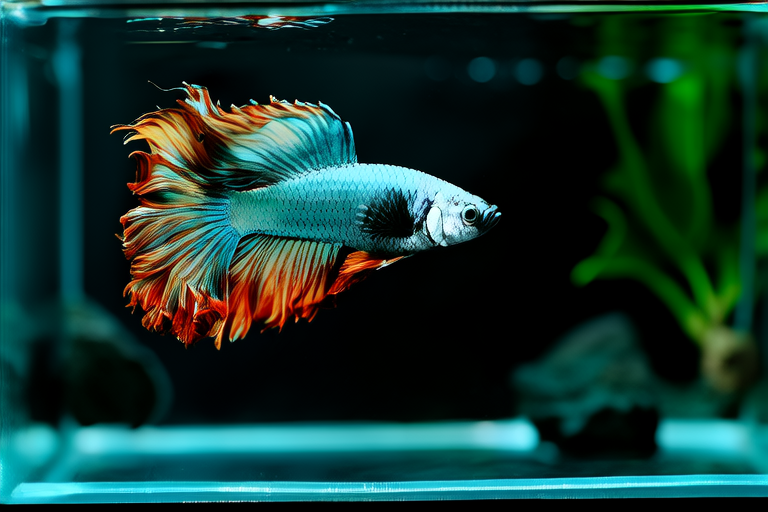
How to Create a Perfect Habitat for Your Colorful Betta Friend
Welcome to the fascinating world of Betta fish! These colorful, vibrant creatures are not just beautiful to look at; they also have unique care requirements that ensure their health and happiness. Creating the perfect habitat for your Betta friend is crucial, as it directly impacts their longevity and well-being. This guide will walk you through every aspect of setting up the ideal environment for your Betta, from tank selection to daily maintenance.
Selecting an Appropriate Tank Size
One of the most common misconceptions about Betta fish is that they can thrive in small containers. While Bettas are resilient, they require ample space to swim and explore. A minimum tank size of 2.5 gallons (10 liters) is recommended, but larger tanks provide more swimming room and better water conditions. Avoid overcrowding by keeping only one male Betta per tank, as males can be territorial. For females, a group of five or more can coexist peacefully in a larger tank.
Maintaining Optimal Water Temperature and Quality
Bettas prefer water temperatures between 76°F and 82°F (24°C to 28°C). Consistent temperatures are vital for their health. Use a reliable aquarium heater to maintain this range and invest in a thermometer to monitor the temperature accurately. Additionally, ensure good water quality by performing regular water changes. A partial water change of about 25% every week is ideal. Always use a dechlorinator to neutralize harmful chemicals in tap water before adding it to the tank.
Choosing Suitable Decorations and Plants
Decorations and plants not only enhance the aesthetic appeal of your Betta’s home but also provide hiding spots and mental stimulation. Choose sturdy, non-toxic decorations and avoid sharp edges that could harm your fish. Live or silk plants are excellent choices as they offer both visual interest and shelter. Floating plants like Java Moss and Anubias Nana are particularly beneficial, as they help oxygenate the water and create a natural environment.
Ensuring Proper Filtration
Filtration is essential for maintaining clean water and removing waste. However, Bettas are sensitive to strong currents, so choose a filter with adjustable flow rates or add a sponge to diffuse the water movement. A gentle filtration system ensures a steady supply of oxygen while minimizing stress on your Betta. Regular cleaning of the filter media helps prevent the buildup of debris and harmful bacteria.
Feeding Guidelines
A balanced diet is key to your Betta’s health. Offer high-quality flake food or pellets twice daily, ensuring each meal lasts no longer than five minutes. Supplement their diet with occasional treats such as freeze-dried bloodworms or brine shrimp. Overfeeding can lead to poor water quality and obesity, so feed sparingly. Always remove any uneaten food within 30 minutes to prevent contamination.
Tips for Handling and Observing Your Betta
Handling your Betta should be minimal and done carefully. When moving them, use a soft net or a container filled with tank water to avoid stressing them further. Observe your Betta regularly for signs of health and behavior. A healthy Betta displays vibrant colors, swims actively, and eats well. Look out for signs of stress or illness, such as lethargy, loss of appetite, or discolored fins.
Spotting Signs of a Healthy or Stressed Betta Fish
A healthy Betta fish exhibits bright colors, clear eyes, and smooth, intact fins. They are active swimmers and show curiosity towards their surroundings. Conversely, a stressed or unhealthy Betta may display dull colors, cloudy eyes, torn fins, or reduced activity. Frequent scratching against tank decorations or floating at the surface might indicate discomfort. Address any signs of distress promptly by improving water quality or consulting a veterinarian.
Addressing Common Mistakes in Betta Habitat Setup
Several common errors can negatively impact your Betta’s habitat. One prevalent mistake is placing the tank near direct sunlight or heat sources, which can cause rapid temperature fluctuations. Another frequent error is neglecting regular water changes, leading to poor water quality. Ensure your Betta’s environment remains stable and clean by avoiding these pitfalls and following the guidelines provided.
In conclusion, providing a perfect habitat for your Betta friend requires attention to detail and commitment. By selecting an appropriate tank size, maintaining optimal water conditions, choosing suitable decorations, ensuring proper filtration, adhering to feeding guidelines, and handling your Betta carefully, you can create a thriving environment for your aquatic companion. Remember, a happy Betta is a healthy Betta!






